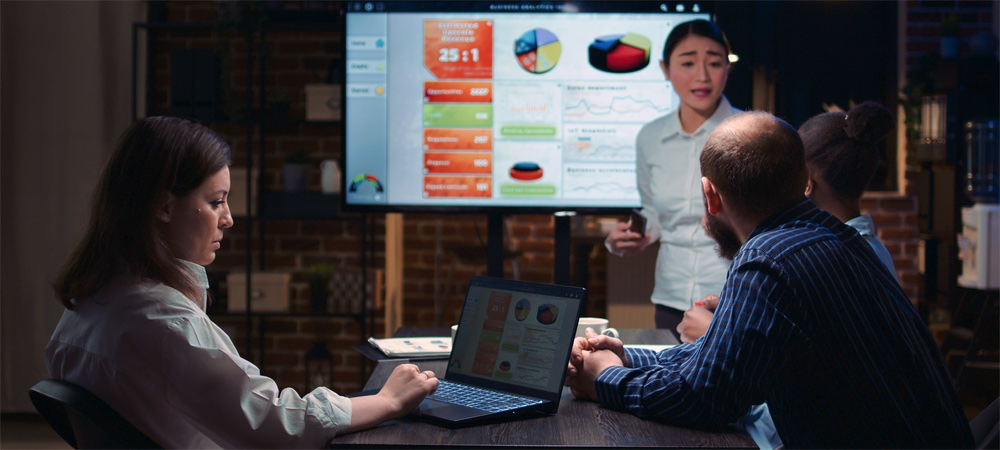The Difference Between People Analytics and Workforce Analytics

Table of contents
- Is HR and people analytics the same thing?
- What Is HR Analytics?
- What Is People Analytics in Human Resources?
- Why is it necessary to distinguish between HR and People Analytics?
- Conclusion
- Frequently Asked Questions
- 6.1. What is the influence of artificial intelligence integration on the future of People and Workforce Analytics?
- 6.2. How does Workforce Analytics help organizations succeed?
- 6.3. Give me an example of a practical application in which People Analytics outperforms Workforce Analytics, or vice versa?
- 6.4. How important is data privacy while implementing People and Workforce Analytics?
HR analytics is defined as the analysis of workforce key performance indicators (KPIs) in order to increase HR process efficiency and reduce operational expenses. People analytics, on the other hand, is described as the study of the workforce’s cognitive processes, status of well-being, opinion, and composition in order to generate actionable suggestions that would increase employee happiness and, as a result, the overall success of the organization.
Is HR and people analytics the same thing?
People analytics and HR analytics are two separate concepts that complement one another. People analytics focuses on actionable analytics for human resource management and recruitment, whereas HR analytics focuses on descriptive data analysis and decision-making tools.
To further appreciate their distinctions, we must first grasp how the HR data analysis process works.
What Is HR Analytics?
HR analytics is the analytical identification and evaluation of human resource aspects that influence company outcomes.

In its most basic form, HR analytics is the analysis of HR patterns throughout an organization in order to detect concerns and propose potential solutions. HR analytics looks into things like absence rates, recruiting rates versus departure rates, and pretty much everything else related to the workforce.
The goal of HR analytics is to uncover and assess human elements that influence an organization’s success. Here are a couple such examples:
- What are people doing?
- How involved are employees in the activities of the organization?
- What are their credentials?
- How will this affect business outcomes?
The process begins with determining the issue or problem that the organization is experiencing. The HR analytics professionals then conduct research on the various organizational components, collect relevant information, and evaluate it in order to determine the core cause of the business’s problems.
Let us examine the definition of people analytics in HR, which is more actionable.
What Is People Analytics in Human Resources?

A title change implies a shift in emphasis.
When HR analytics initially emerged, the goal was to learn more about the organization. The emphasis is on the enterprise rather than on the personnel as individuals. Organizations have understood that the human factor is vital to the company’s operations over time, hence the shift in emphasis.
Workers are no longer viewed as mere resources or numbers, but as essential contributors to the company’s total success. The technique of data gathering has been changed to acquire more information about how individuals think and make decisions, and the approach towards study and analysis has also changed. Analysts are investigating questions such as: What are people’s opinions? What variables might contribute to a more creative workplace? What elements might promote cooperation? Such issues are crucial to people analytics, and there is a clear distinction between the questions addressed by HR analytics and those answered by people analytics.
Also Read: Change the Way you Approach Workforce Analytics
People analytics is being used in a variety of corporate operations, including recruitment processes, policy amendments, and benefit package creation and development. You can answer queries like:
- What is people analytics in HR?
- What inspires employees to continue working?
- What motivates them to achieve at their best?
- What motivates them to get more involved in the organization?
- So, why do individuals give up?
The solutions are immediately applicable and require little extra context. This is the benefit of using people analytics over traditional HR analytics. As a result, people analytics is the modern manifestation of HR analytics.
Why is it necessary to distinguish between HR and People Analytics?
Today, the terms people analytics, HR analytics, workforce analytics, and talent analytics are used interchangeably in the industry. Because it stresses professional competence and is commonly utilized in academia, talent analytics has a rather restricted connotation. Labor analytics is increasingly being used by software companies specializing in labor planning.
However, HR analytics and people analytics are both concerned with the statistical analysis of human resource data and are sometimes used interchangeably.
HR analytics has become the most well-known of these phrases. Each month, approximately 5,500 HR analytics-related Google searches are conducted. With approximately 1,500 monthly searches, people analytics ranks lower.
However, the term “people analytics” has recently gained popularity. This could be due to:
- The term “HR analytics” implies a solely HR focus. Other aspects of working with and managing employees are included in people analytics.
- HR analytics is fundamentally about people, which is why the term “people analytics” is commonly used.
- Most firms are shifting their focus from department-centric analytics to overall analytics. People analytics as part of a broader business analytics solution is thus a lot more appropriate designation than HR analytics.
Companies with sophisticated, mature HR/people analytics systems frequently use the term “people analytics.” In contrast, “HR analytics” is more common in firms where the HR/people function is still in its infancy, with little or no data science involved.
HR and people analytics have separate applications, despite their close relationship. The latter may include behavioral patterns, employee reactions to particular situations, and so forth. If you have the requisite data, there may be an infinite number of use cases, similar to psychological examinations in very established firms.
Human resource analytics, on the other hand, would focus on personnel retention/attrition analysis and performance analysis, to name a few common action areas.
Conclusion
While both People analytics and workforce analytics aim to optimize human resources, people analytics focuses on individual employee experiences and well-being, whereas workforce analytics focuses on wider organizational trends and performance indicators. Both are critical for making informed decisions and promoting a comprehensive approach to labor management.
Frequently Asked Questions
Q1. What is the influence of artificial intelligence integration on the future of People and Workforce Analytics?
AI integration in People and workforce analytics automates data analysis, allowing for faster and more accurate decision-making. It also enables predictive analytics, allowing firms to address challenges proactively and optimize human resource strategies for long-term success.
Q2. How does Workforce Analytics help organizations succeed?
Worker analytics investigates larger trends, improving worker efficiency and assisting with strategic decisions. It improves performance and assists in matching personnel initiatives with company objectives by examining organizational data.
Q3. Give me an example of a practical application in which People Analytics outperforms Workforce Analytics, or vice versa?
People Analytics is generally more useful for individual employee development and talent management. Workforce Analytics, on the other hand, excels in scenarios requiring a grasp of overall organizational trends, such as workforce planning or succession planning.
Q4. How important is data privacy while implementing People and Workforce Analytics?
Data privacy is critical in both analytics fields. Organizations must build strong policies to maintain compliance with privacy rules, protect employee data, and extract valuable insights to make educated decisions.



